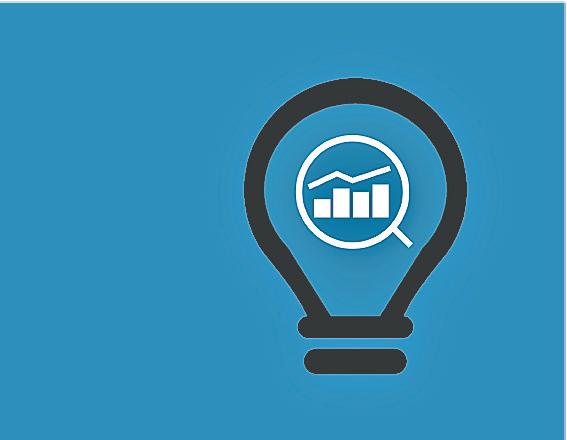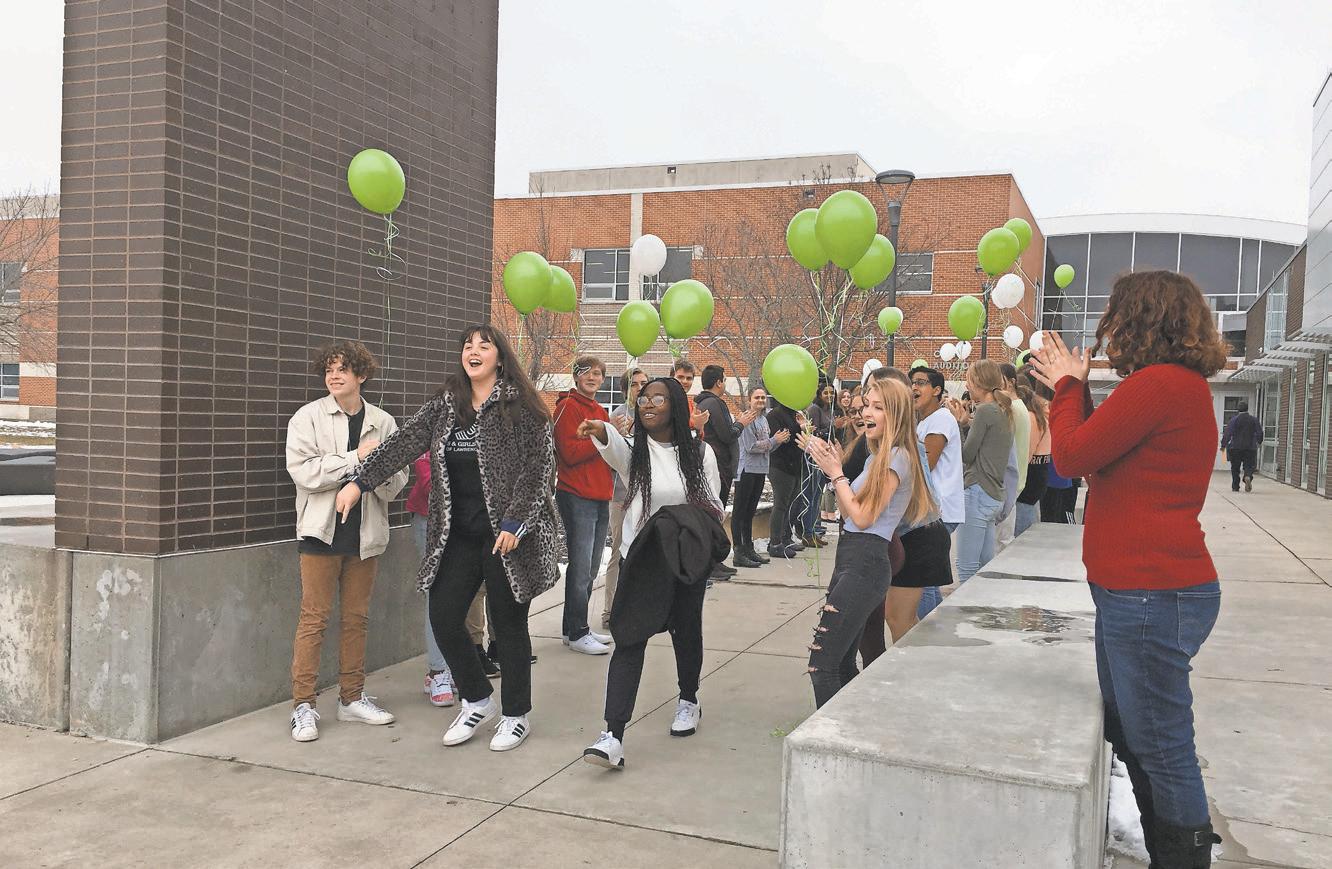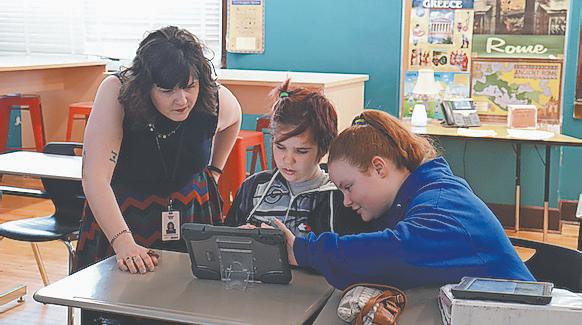
5 minute read
Data-Informed Decisions/Strategic Plan Update

Themes, Objectives, and Year-One Initiatives and Action Steps
Advertisement
1. Use data to inform all instructional decisions. 2. Develop systems that support student-focused, data-based decision-making. a. Facilitate the accurate collection, analysis, use, and reporting of data. 1. Develop a District Data Team to review data reporting methods. 2. Create a data dictionary for the Academic Team. 3. Determine measurement tools. 4. Create an assessment schedule. 5. Develop standard reports. 6. Provide training and professional development on business rules for all personnel entering data. 7. Develop a schedule for checking for delity. 8. Collect staff feedback. 9. Develop a communications plan to keep staff informed. 10. Revise standard reports. b. Allocate resources according to research based best practices for student success. 1. Finalize the membership of the Budget and Program Evaluation Team. 2. Communicate to budget managers the Budget and Program Evaluation Team’s selection of programs and departments for evaluation. 3. Review requests for new funding. 4. Review and implement a prioritization process to evaluate budget additions, reductions, and reallocations, and present suggestions to the Board of Education. 5. Determine a list of programs to review in the fall of the 2020-2021 school year. 6. Provide the Board of Education an update about any requests for new funding for the 2020-2021 school year. 7. Present a draft of the 2020-2021 budget to the Board of Education. 8. Support the Board of Education in conducting the annual public budget hearing and considering approval of the 2020-2021 budget for publication.
Superintendent Shares Strategic Plan Update
Among the priority student outcomes of the district’s strategic plan are increasing students’ reading pro ciency by third grade and math pro ciency by eighth grade. The district created a common assessment this year in order to identify the standards students have mastered and diagnose others they nd challenging. This information serves valuable to teachers in modifying instruction.
The common assessment, aligned with the Kansas State Assessments and administered across all Lawrence schools, evaluates student understanding on the standards being taught in third grade reading and grades 6-8 math. Standards are what the state expects students to know and be able to do at each grade level.
Third Grade Reading
• Common assessment results show 15% of third graders at the mastery level, 46% nearing mastery, and 39% needing remediation on those reading standards. • State assessment results for third graders showed 47% in 2018 and 48% in 2019 scoring at levels 3 (meets standards) and 4 (exceeds standards) in reading. • AIMSWeb, a literacy assessment given in the fall and again in the winter to measure foundational skills, shows that most (76% in the winter of 2020) third grade students are at low risk of failing to meet the reading benchmarks.
Eighth Grade Math
• Common assessment results show 26%, 30%, and 44% of eighth graders scoring at the mastery, nearing mastery, and remediation levels, respectively, on those math standards. • In 2018, 28% of eighth graders scored at levels 3 and 4 (meets and exceeds standards) on the state assessment in math, and in 2019, 30% of eighth graders scored at those levels.
Continued: Strategic Plan Update
• Measures of Academic Progress, a national norm-referenced test, showed that 23%, 27%, and 21% of eighth graders made growth in math in the fall of 2017, 2018, and 2019, respectively.
“Hope is not a strategy,” said Superintendent Dr. Anthony Lewis. “The good news is that we now have a gauge of student progress to share with teachers so they can focus instruction on speci c standards on which students need to improve. With the state assessments, we receive the data and try to do better next year. With this new diagnostic test, we know now how we’re doing and can plan interventions before students take the state assessments.”
Achievement Gaps/ Opportunity Gaps
“We need to look at this differently,” Dr. Lewis said. “The term achievement gap unfairly places blame on the students. These are really opportunity gaps based on the conditions and obstacles inherent in an inequitable system. We are looking at what we can do differently, as a system, to make sure we are providing equal opportunities for all of our students.”
While Multi-Racial Students in Lawrence are “exceeding,” Students with Disabilities are “approaching,” and all other student subgroups are “meeting” state averages, Kansas Assessments show that white students are 65% and 68% more likely than non-white students to meet or exceed expectations in reading and math, respectively. All other identi ed student subgroups range from 24% (Multi-Racial Students in math) to 80% (Students with Disabilities in math) less likely to perform at Levels 3 and 4.
Strategies the district is using to level the playing eld include removing nancial and pre-requisite barriers to the curriculum, revising curriculum, tracking advanced and concurrent enrollment, use of a Culturally Relevant Resource Criteria to guide instructional practice and evaluate resources, training in culturally relevant teaching practices, and personal re ection on unconscious biases through Beyond Diversity staff training, for example.
“Our schools are committed to all of our students having the same likelihood of meeting and exceeding expectations in reading and math,” said Dr. Lewis.
Graduation Rates
The district’s graduation rate in 2019 was 82.8%. According to current data, 864 of the district’s 893 high school seniors are on track to graduate. Strategies being used to improve graduation completion include relationship building, surveying students about school connectedness, the creation of an alternative program, the College and Career Academy; monitoring course failures, and developing a graduation tracking system, as examples.
KSDE Post-Graduation Success Rate
KSDE considers 55.1% of Lawrence high school students who graduated in 2017 as “advancing in college and careers” two years later. The Success Rate is based on students earning industry-recognized certi cations in high school, postsecondary certi cations or degrees, or remaining enrolled in postsecondary education two years following high school graduation. Strategies the district is using to improve in this area include expanding concurrent credit opportunities through the Jayhawk Blueprint program, focusing on Individual Plans of Study, expanding career and life planning, curriculum alignment, and focusing on 21st-century skills in its middle school design committees.













